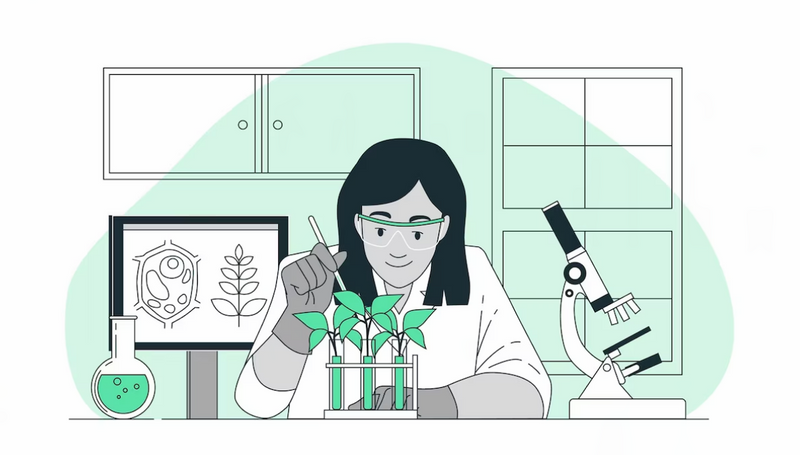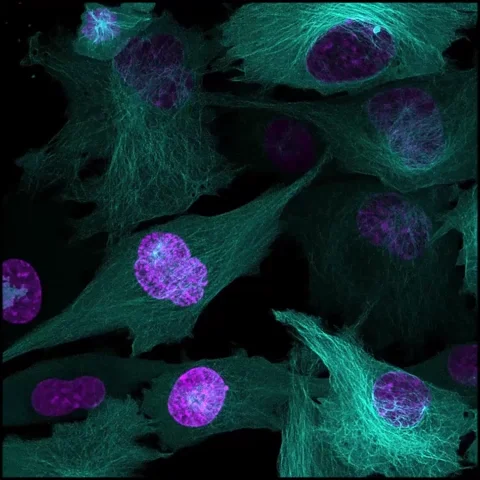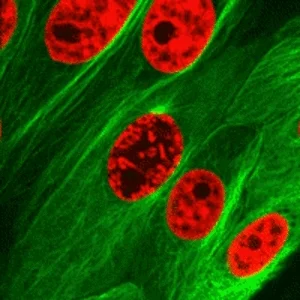
What do home dust, growing in height, and cancer all have in common?
All of these involve a process called mitosis.
As a high school teacher, it might be hard to make dry, dusty biology topics into something interesting. But mitosis might grow on you and your students in 4 steps! 🙂
Step 1. Become a mitosis master 👩🏿🔬
 Image by storyset on Freepik
Image by storyset on Freepik
Be the mitosis expert that your students need by:
Watching videos created by engaging biology experts such as Amoeba Sisters, Khan Academy, or CrashCourse
Reading an open-access online text-book about the cell cycle
Practicing with mitosis activitiesto see which ones will fit your course goals
Making scientific slidesto view under a microscope and review mitosis stages
If you have these or can make a purchase, here are some slide examples for your class:

PlantCell Slide Mitosis Examples
Cultivated onion root tips
Other Allium spp. plant root tips, such as chives, garlic, leeks, scallion, or shallot

Animal Cell Slide Mitosis Examples
Whitefish blastula (embryonic stage)
Roundworm eggs, such as Ascaris spp.
Human cervical cancer
Step 2. Try new learning strategies 👨🏽🏫

Image by storyset on Freepik
If you or your students have a passion for poetry, music, or moving body cells, try:
Creating song lyrics about mitosisthat describes the stages
Writing a poem on cell divisionsteps and processes
Coordinating a class dance mitosis activity with a teacher/student guide
 Image by storyset on Freepik
Image by storyset on Freepik
Meditation with deep breathing is known to slow down your cells' dividing or aging.
Practice slowing down cell division together by:
Facilitating a guided meditation followed by a mitosis discussion
Practicing with a 5-minute breathing exercise together, then tying it to the lesson
Step 3. Share effective mitosis study tools 📓
 Image by storyset on Freepik
Image by storyset on Freepik
Share the PMAT acronym along with the "Please Make A Taco" mnemonic:
Prophase— chromatin condenses to chromosomes, spindles form, and centrosomes begin to move to opposite Poles
Metaphase— chromosomes line up at the Middle of cell
Anaphase— chromosomes pull Apart and move to opposite ends of cell
Telophase— Two new cells start forming nuclei and nuclear envelopes
Note: depending on your class needs, you may have to add information about interphase and late prophase in your lesson.
Quiz
Let's see if you've reviewed mitosis! After mitosis, the resulting cells:
Step 4. Show real-world mitosis examples 🌏

Image by storyset on Freepik
Breast cancer is a disease where cells divide uncontrollably and form a tumor mass on the breasts of a person.

Image by storyset on Freepik
Many living beings, including human beings, are constantly going through mitosisin order to repair old cells and to grow into adulthood. When your students are growing in height, that is also mitosis!
Take Action

Help your students grow and learn about mitosis!
Your feedback matters to us.
This Byte helped me better understand the topic.

